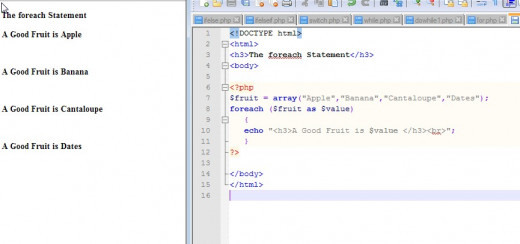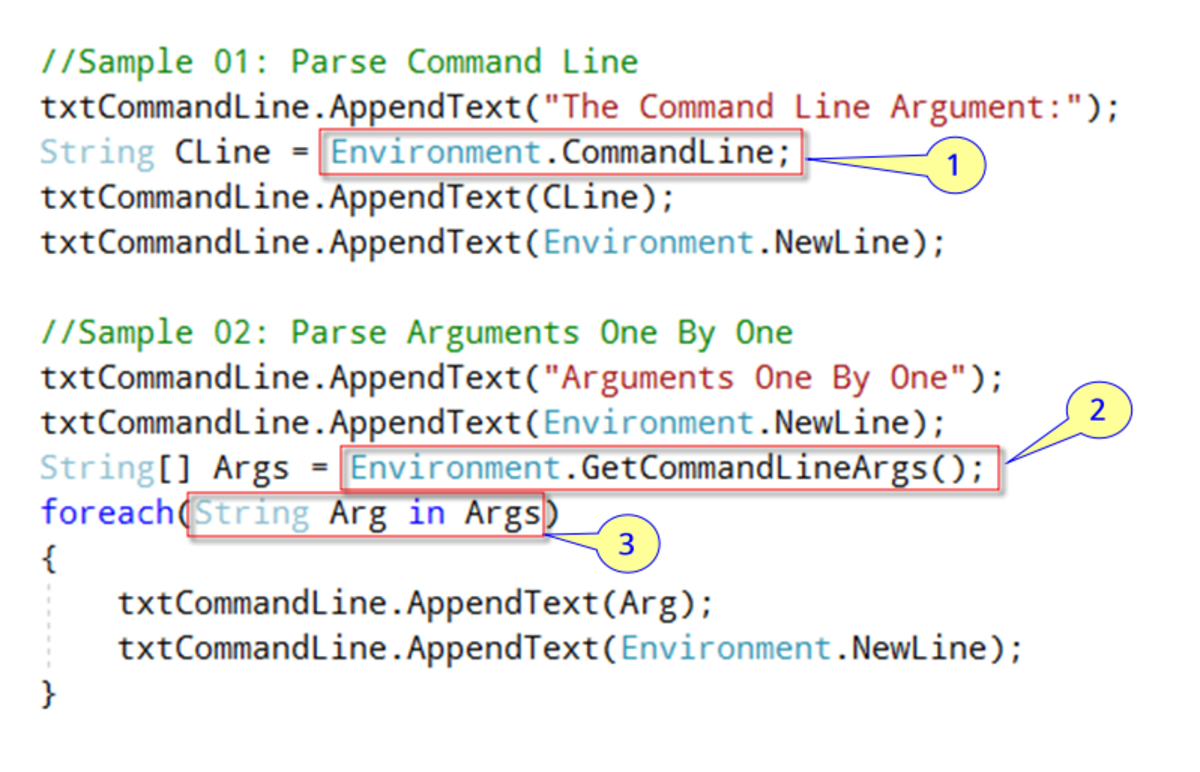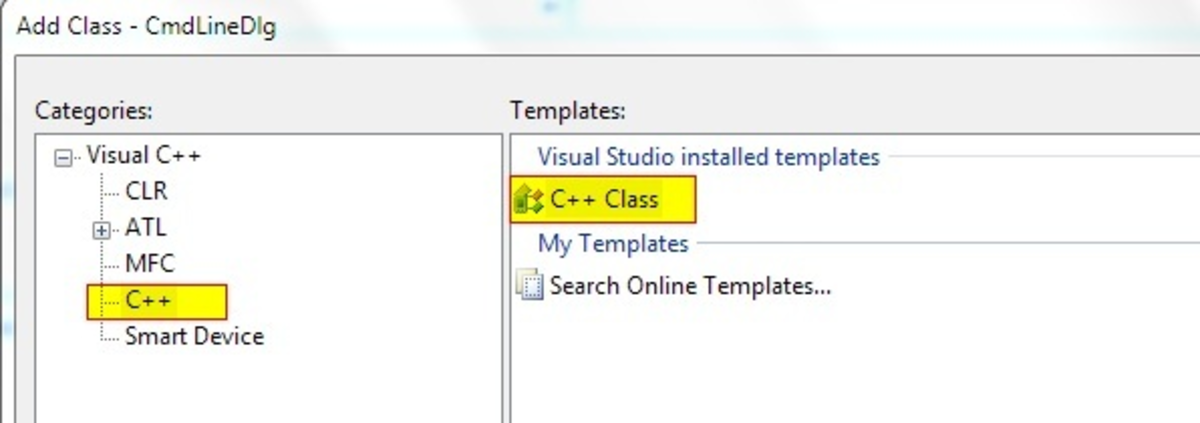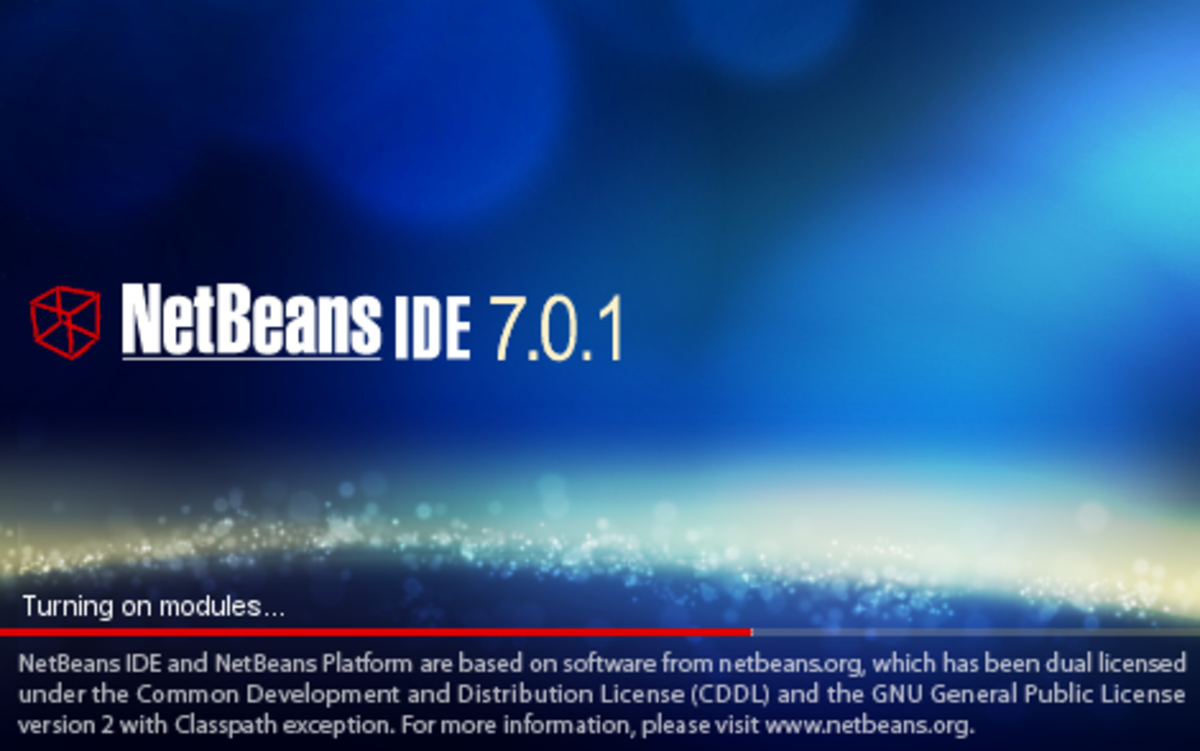- HubPages»
- Technology»
- Computers & Software»
- Computer Science & Programming»
- Programming Languages
A Server Side Web Tutorial Series # 4 - PHP Conditional Statements
The if, if...else, and if..elseif Statements
PHP has a number of conditional statements which begin with the keyword if:
- if statement - executes some statement or statements (referred to as a code block only if a specified condition is true
- if...else statement - executes one code block if a specified statement is true and another code block if the condition happens to be false
- if...elseif....else statement - selects one of several blocks of code to be executed
The format of the if statement is
if (the named condition which can evaluate to either true or false goes here) {
the statement or statements (the code block goes here if the condition is true
} // the code block is encapsulated in between the curly braces
The if...else statement has an alternative code block to execute if the condition is false. The outline of the if...else statement is:
if (the named condition which can evaluate to either true or false goes her) {
the statement or statements (the code block goes here if the condition is true
} else
{ the statement or statements (the code block goes here if the condition is false
} // Note : both code blocks are enclosed in curly braces
The if...else...if statement adds an if statement after the curly brace which ended to code block executed when the condition in the first if was false.
This if...elseif....elseif.... could be continued for as many conditions which might have to be check for, but as one can see this could get quite messy. Fortunately there is an alternative, the switch statement which will be covered in the next secion.
The simple snapshots which follow illustrate the if and if...else and if...elseif constructs.
Examples of if, if...else, if...elseif Conditional Statenebt Use
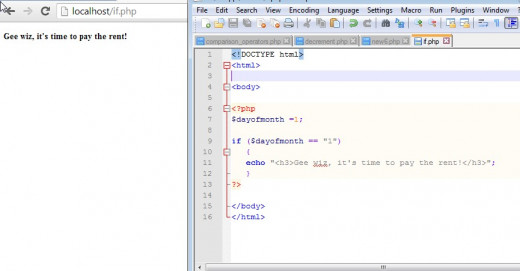
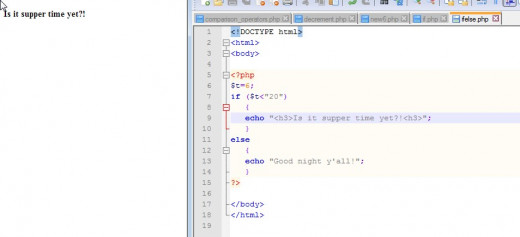
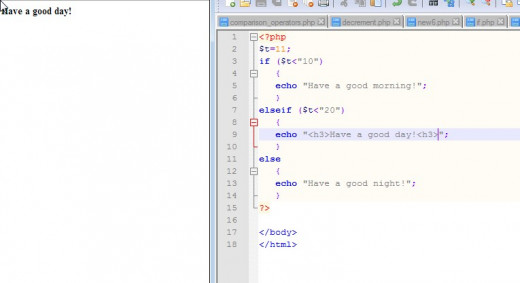
The switch Statement
The switch statement presents a cleaner and more understandable way of coding where there are more than two possibilities exist. Generally we have some variable which can take on a number of values. The switch statement compares the variable against each condition in turn until the variable when considered evaluates to true.
Consider the following example. There are seven days in the week and for each of the days we perform some task. (e.g. go to church on Sunday, mow the grass on Monday, buy groceries on Tuesday, etc.
In switch statement pseudo code the switch statement would look something like this:
indicate the day of the week with the variable:
$dayofweek
The switch statement would be invoked as follows: switch($day of week)
The actions for each of the day of the week are indicated by cases for example, For Sunday and Monday the cases would be coded as follows:
case "Sunday":
perform the "go to church" activity"
then we exit the switch statement with the keyword break
case "Monday":
perform the activity "mow the lawn"
and again we exit the switch statement with the keyword break
..........and continue on with cases
Now, not all days would necessarily have actions or the actions might be identical. For this, rather than iterating over each day of the week, we would specify a special case, the default case:
default:
some default action or no action could be indicated here.
The basic outline becomes
switch(condition to be tested)
case 1:actions break
case 2: actions break
....more cases here.....
default: actions
and the switch statement would end.
A switch statement in PHP is illustrated in the snapshot which follows.
An Example of the Use of the switch Statement
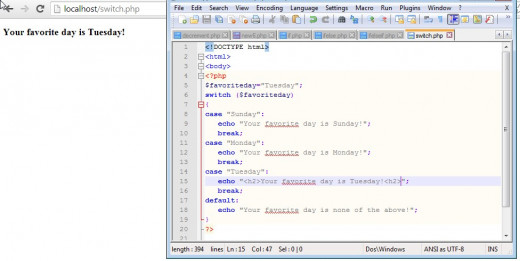
PHP Loops, Another Form of Conditional Statements
In PHP (as in other programming languages there are times we want to perform identical actions while some condition is true. Often we want to iterate in some block of code The following looping (conditional) statements are:
- while - loops through a block of code as long as the specified condition is true
- do...while - always perfrom some code block at least once and then determine whether it ought to be repeated as long as the specified condition is true
- for - loops through a block of code a specified number of times
- foreach - loops through a block of code for each element in an array
The following sections discuss each of these constructs in detail.
The while Statement
The syntax of the while statement is rather simple:
while(condition is true)
{
code block to execute while the condition is true
}
An example of the while statement in action follows in the snapshot.
A while Conditional Statement Example
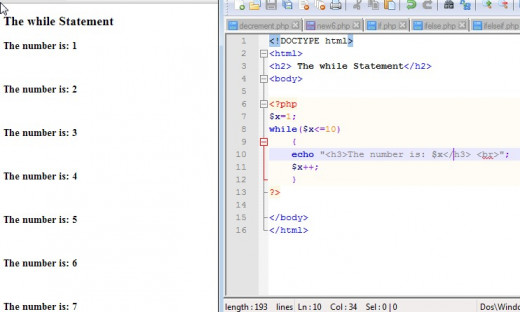
The do...while Statement
The do.....while statement is distinguished in that the code block is executed before the keyword is encountered. Thus, the code block is always executed at least once and then however many times if the condition being checked remains true.
The outline of the do...while statement is:
do
{
code block to be executed
}
while(condition is true)
An example follows in the snapshot.
The do....while Statement
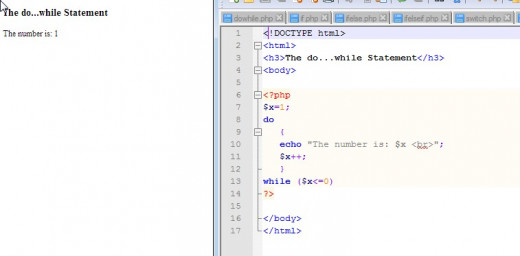
The for Statement
The for loop is executed a specific number of times:
The syntax of the for statement is as follows:
for(an initial counter value; test the counter; increment the counter){
execute the code block
}
The for loop has three parameters:
- initial counter: Initialize the loop counter value
- test counter: Evaluated for each loop iteration. If it evaluates to true, the loop will continue. If false the loop ends.
- increment counter: Increments the loop counter value
The snapshot illustrates the use of the for counter.
The for Statement
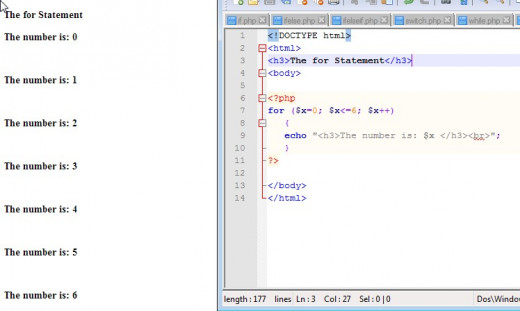
The foreach Loop
We have not discussed arrays as such in these tutorials, This section is placed here to give the reader the complete set of conditional statements in PHP in one place. The foreach loop with be reviewed in out tutorial on arrays.
The foreach loop works only on arrays. It is used to loop through each key/value pair in an array
The syntax of the foreach loop is:
foreach($array as $value){
execute the code block
}
A simple example is in the snapshot which follows. The $array refers to the array by name. The $value is a way of referring to a key/value pair in the code block.
The foreach Statement
